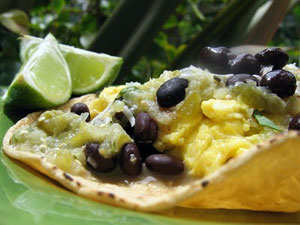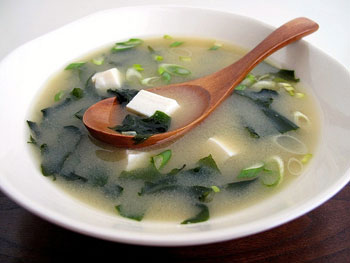 When it comes to cooking the food from another culture, the ingredients and techniques can be unfamiliar. Going to a foreign country and taking a cooking class is great, but not a readily accessible opportunity for most. Fortunately there are local cooking classes and cooking kits.
When it comes to cooking the food from another culture, the ingredients and techniques can be unfamiliar. Going to a foreign country and taking a cooking class is great, but not a readily accessible opportunity for most. Fortunately there are local cooking classes and cooking kits.
Recently launched Global Grub offers cooking kits with extremely well written instructions that will help you succeed in making things like sushi, or jerk chicken with coconut rice and beans. I used the tamales kit and was very impressed with the quality of the ingredients, the clear instructions and the wonderful results. My dad said the tamales were the best he'd ever eaten!
Kits include the dry and hard to find ingredients, and range in price from $13.99 up to $19.99 and for every kit purchased, Global Grub donates a meal to someone in need through their local food bank. Global Grub offers tutorial videos on their site, and the instructions with each kit are easily folded into a stand for easy reference as you cook.

 I knew them so well, I am sure I could have called them by their first name or (at the very least) in our family’s preferred style – ‘Uncle’ Chiang and ‘Auntie’ Madame Chiang, but I had much too much respect for those monstrously large and patronizing portraits that hung in the Grauman’s Chinese Theater to call them anything but Generalissimo Chiang Kai-shek and Madame Chiang Kai-shek. And, I always greeted them with reverence each Friday night when we went to the Chinese Theater and to the movies! I guess I was seven, and I had never seen portraits so grand and large. I wonder what happened to them. When were they un-ceremoniously dethroned and where are they now? Probably, resting on their sides against the wall of some antique warehouse in downtown Los Angeles smelling of incense and camphor…
I knew them so well, I am sure I could have called them by their first name or (at the very least) in our family’s preferred style – ‘Uncle’ Chiang and ‘Auntie’ Madame Chiang, but I had much too much respect for those monstrously large and patronizing portraits that hung in the Grauman’s Chinese Theater to call them anything but Generalissimo Chiang Kai-shek and Madame Chiang Kai-shek. And, I always greeted them with reverence each Friday night when we went to the Chinese Theater and to the movies! I guess I was seven, and I had never seen portraits so grand and large. I wonder what happened to them. When were they un-ceremoniously dethroned and where are they now? Probably, resting on their sides against the wall of some antique warehouse in downtown Los Angeles smelling of incense and camphor… Since I live in Southern California, I really should speak Spanish. It’s not like I don’t know any Spanish. I know a few essential phrases, such as Buenas dias. ¿Cómo esta? Muchas gracias. And ¿Puedo tener huevos rancheros, por favor?
Since I live in Southern California, I really should speak Spanish. It’s not like I don’t know any Spanish. I know a few essential phrases, such as Buenas dias. ¿Cómo esta? Muchas gracias. And ¿Puedo tener huevos rancheros, por favor? Miso soup is a traditional Japanese comfort food that has gained popularity throughout the world. Here in the United States, it entered the zeitgeist along with sushi and sake when Japanese cuisine became popularized in the 1980s. In Japan, miso soup is eaten by everyone everyday and is as popular as tea. Most Westerners tend to find it difficult to appreciate miso soup, to say the least. It's just one of those foods that is either loved or hated. But for me it's a soup I've been trying to come to terms with for many years. Whenever I've had miso soup I've always hated it, but sometimes I've almost liked it. I've learned that depending on the restaurant and depending on the preparation and the paste used, miso soup can be very different.
Miso soup is a traditional Japanese comfort food that has gained popularity throughout the world. Here in the United States, it entered the zeitgeist along with sushi and sake when Japanese cuisine became popularized in the 1980s. In Japan, miso soup is eaten by everyone everyday and is as popular as tea. Most Westerners tend to find it difficult to appreciate miso soup, to say the least. It's just one of those foods that is either loved or hated. But for me it's a soup I've been trying to come to terms with for many years. Whenever I've had miso soup I've always hated it, but sometimes I've almost liked it. I've learned that depending on the restaurant and depending on the preparation and the paste used, miso soup can be very different. Chicken Paprikash, one of Hungary’s signature comfort food dishes, is made with the country’s quintessential ingredient - paprika. Perhaps not as famous as the better known Goulash, it is still found on nearly every menu and is a common recipe in most Hungarian homes. I was in Budapest for the first time a few months ago and loved the city, in fact I’m already planning a return trip.
Chicken Paprikash, one of Hungary’s signature comfort food dishes, is made with the country’s quintessential ingredient - paprika. Perhaps not as famous as the better known Goulash, it is still found on nearly every menu and is a common recipe in most Hungarian homes. I was in Budapest for the first time a few months ago and loved the city, in fact I’m already planning a return trip.